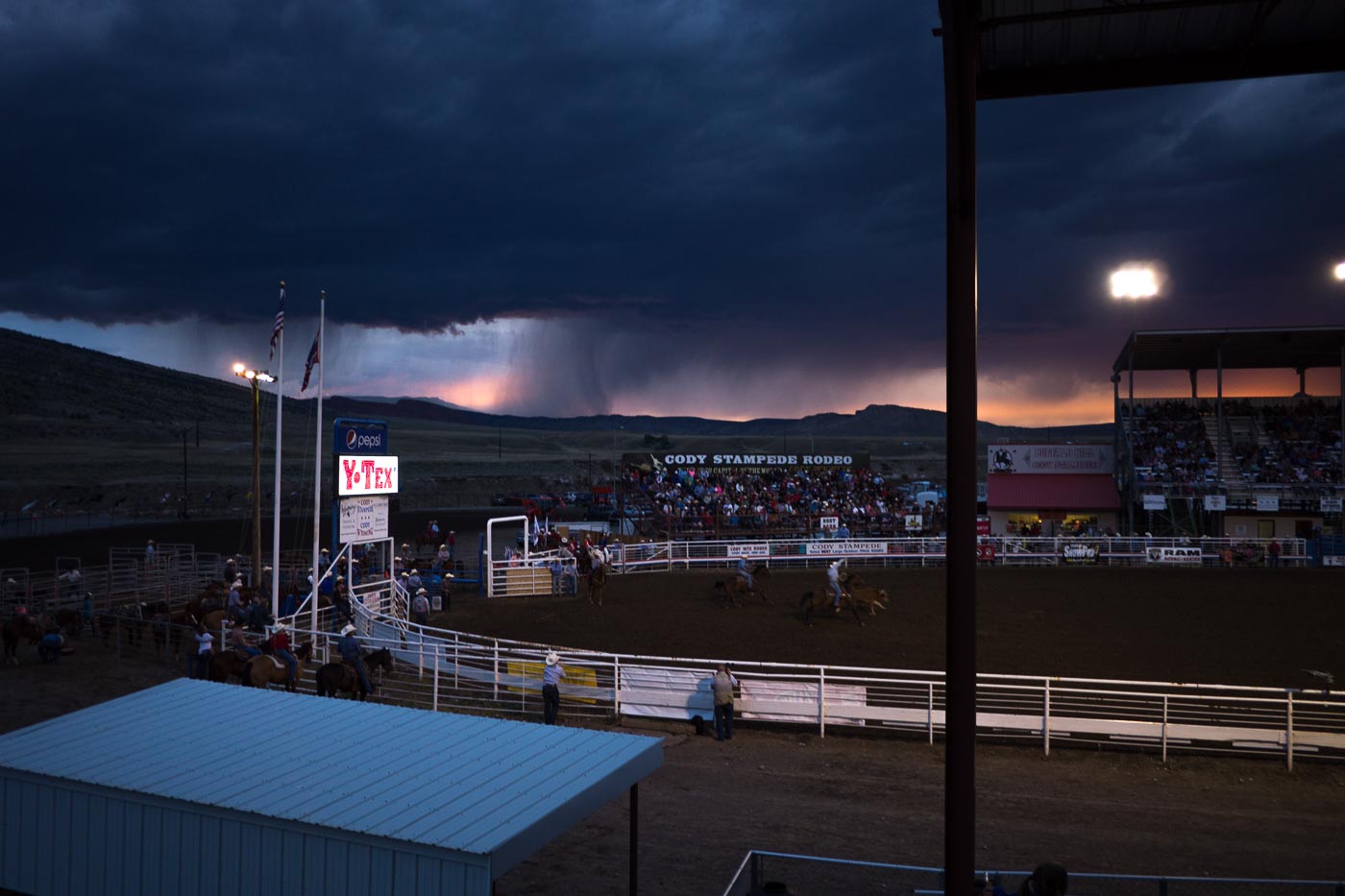Week 3: Wyoming
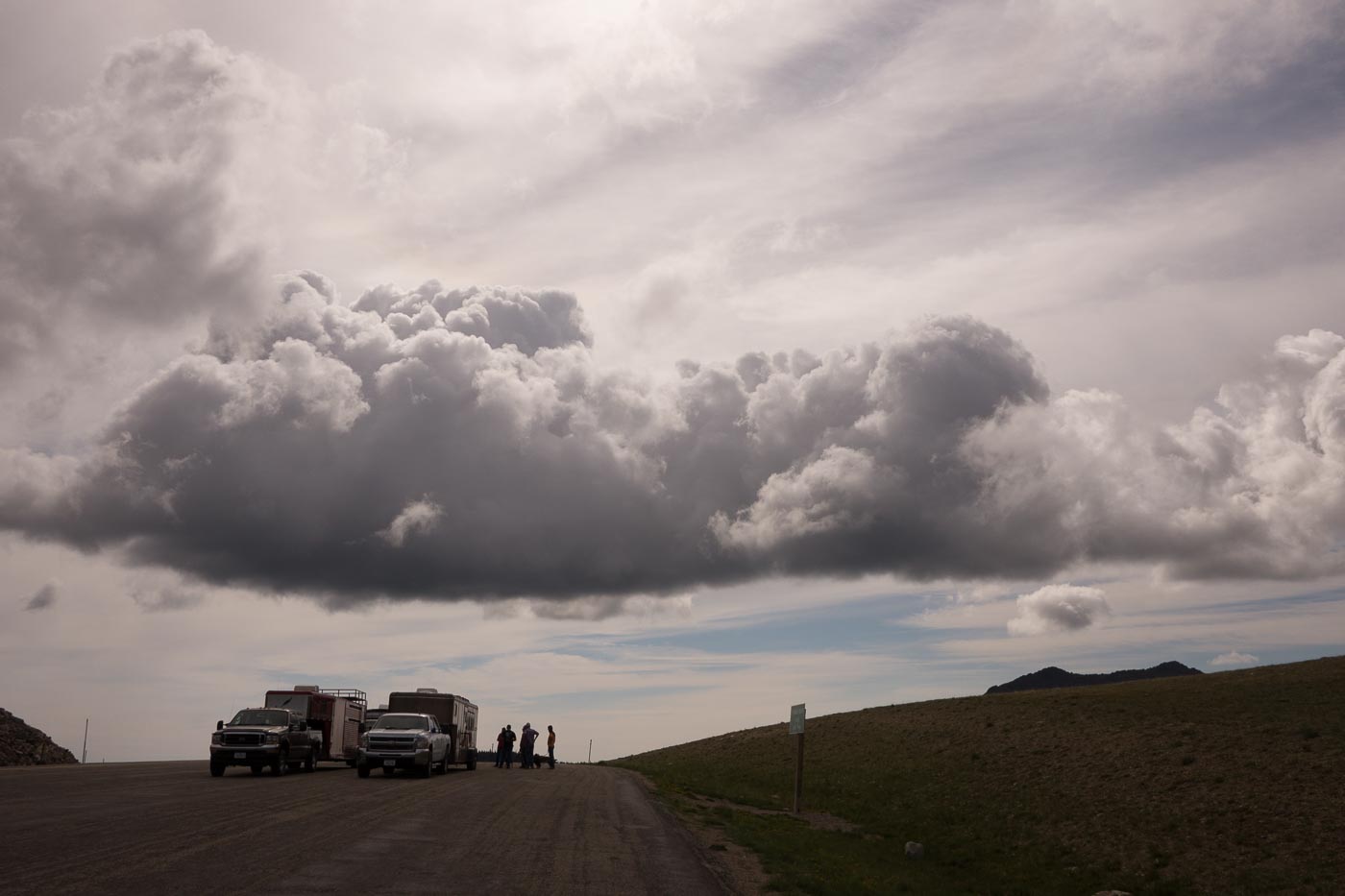
Day 15 — June 27 I leave Frank’s at a reasonable hour and coast down the road circling the monument. The sky is hazy with smoke from a wildfire forty miles south. Thanks to light winds it had been contained overnight, and I’m not worried about it. Prairie dogs, standing alert, make their chee chee chee call as I pass and run to their burrows, which they build close together as villages. I chatter with them. Prairie dogs, social and smart, apparently have a sophisticated language to describe to each other dangers they see: “tall human wearing blue.” Maybe they have a word for bicycle.
A few miles down the road I run into Martha and Nate, the cyclists I met in the Badlands. You’re going the wrong way! I advise. We looped around south and want to check out Devil’s Tower, Nate says. So you’re not going take a bus from Rapid then? Nah, we’re biking. That day in the Badlands, we just felt so tired after those headwinds. I understand completely. I give them directions to Frank’s and wish them well.
I make it to Gillette, 60 miles, and splurge on a motel, escaping the heat.
Day 16 Gillette to Buffalo is some 70 miles and nearly all of it must be ridden on I90. I get started at 6:30. There is hardly any wind. Traffic is light. I pass another cycle tourist, who doesn’t seem to want to talk. It’s a long day on the highway and I suppose he wants to stay focused.
The country here is gently rolling, arid, full of sagebrush. This is the Powder River basin, stretching north to south 100 miles wide, the trough between the Black Hills and Bighorn uplifts. There are occasionally small reddish mesas near the road. Through the basin, old Paleocene and Eocene swamps were buried under thousands of feet of sediment to cook under pressure and form enormous coal beds. The overlying sediment has since eroded away. Exposed coal seams caught fire, and the heat metamorphosed surrounding sandstone and shale into bricks and ceramics called clinker. Those are the mesas.
About fifty miles away from Buffalo I see what I first think are a series of small clouds in the distance. Snowcaps! The Bighorns emerge from the haze as I get closer and then a dramatic view as I descend into the valley. Big, broad, cutting a sharp line from the basin.
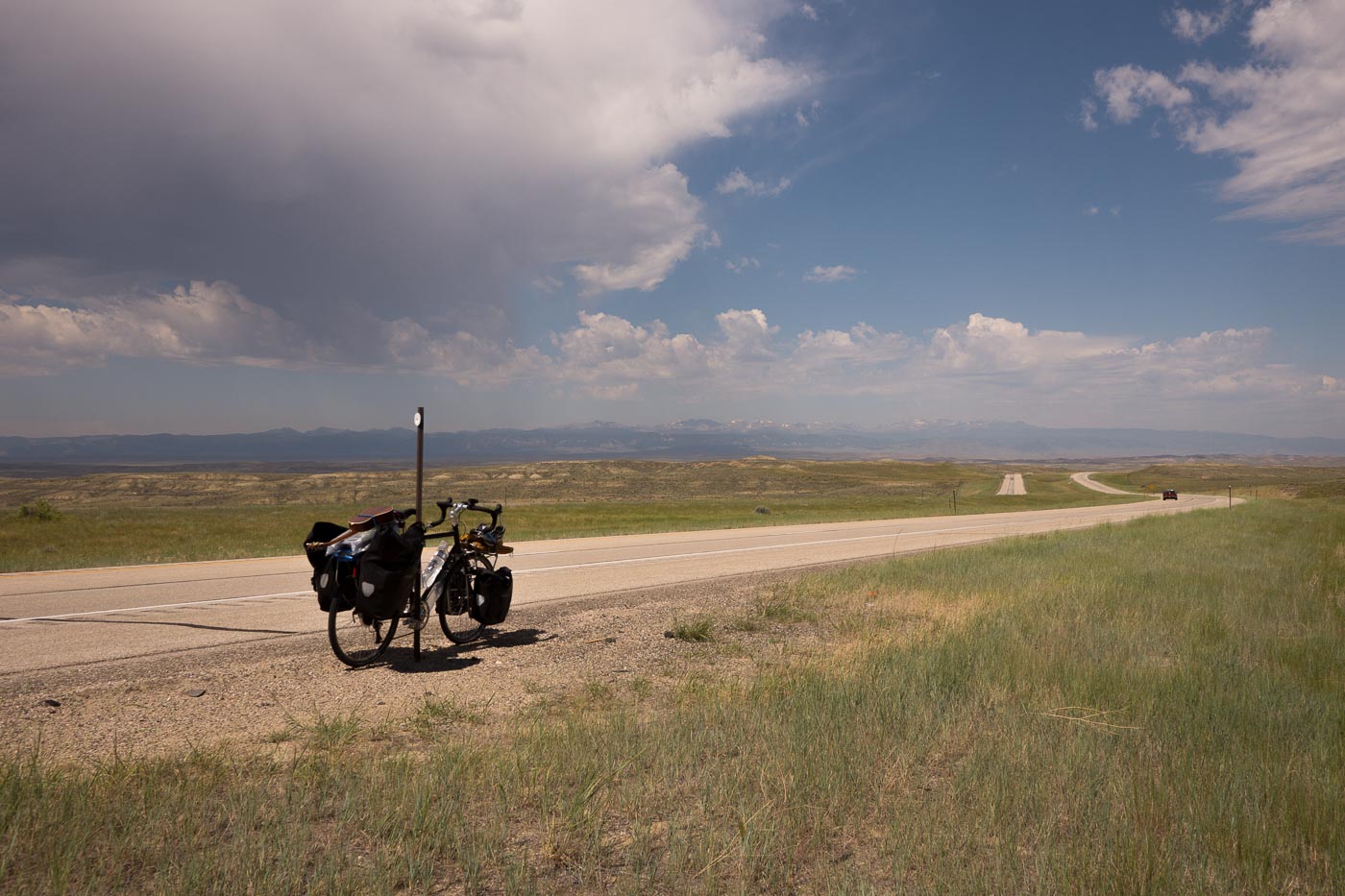
In Buffalo I stay at a campground, the Mountain View, which has a special price for passing bicycle tourists. I meet Allen, who works here in trade for parking his camper. He’s especially friendly to cyclists and is planning a tour of his own around Wyoming. He studies my equipment with interest. So that’s a non-stick pan? Yep. Most cyclists that come through here use one of those titanium pots. Really lightweight. I like your idea though.
He sees my crocs. About half the cyclists have a pair of those, he says. I should get myself a pair. Do they ride in them too? You ride in those? Everyday. Well, that’s a first.
Allen has a deep, baritone voice with a hint of Texas, a Southern affability and comfort in conversation. We sit and chat for hours. It turns out we both carry ukuleles, and we play some John Prine to the campground courtyard.
Day 17 Today I had planned the big climb over the Bighorns, but my legs are feeling tired, so I take a rest day. In the morning I have coffee with Allen and Jack, more part-time help at the Mountain View. Jack wears motorcycle jackets with holes in the elbows. He squints at me behind an elegant beard and smiles. Don’t worry about the brown bear, he reassures me. They won’t hurt you. Just throw ’em a little food, they’ll leave you be. Jack speaks slowly and softly, almost a whisper. Wolves, don’t worry about them. Look them straight in the eye. Throw ’em a little food.
I thought you weren’t supposed to look them in the eyes, I say. Bullshit, Jack says, I’ve trained wolves. Now, black bears, they’re squirrelly. Watch out for them. Never turn your back. And cougars…
Allen jumps in. I’ve never heard of anyone being eaten by a cougar here. Only out in California. Here they keep their distance. I wouldn’t worry about them.
Later, I buy a can of bear spray. $50.
Day 18 I awake at 3:30, ready to start packing up for an early departure, to avoid hitting thunderstorms at elevation, but lightning is flashing in the night. A storm is coming in from the mountain, unusual at this time. I check the forecast. Storms predicted all day, especially up at the pass. Another rest day it is.
In the afternoon I go to the Mountain View office and talk with Charles, the owner. Charles, before settling down to run a motel and campground, has ridden his motorcycle over most of the roads west of Buffalo. I want his advice on getting to Yellowstone. I point to Riverton Wyoming, just south of Thermopolis and the Wind River canyon. I’m planning biking down here and then coming up through Dubois into the Grand Tetons, I say. Charles studies the map. Yeah, the Grand Tetons are pretty, but a lot of the views are obscured by the foothills. He strokes his beard. For a lot of the ride, you won’t be seeing that much. That’s OK, I say, as long as it’s worth it in the end.
His eyes move north. This, he says, putting a finger down, is the most beautiful road in the country. That’s the road I would take, if I were you. I look at the map. The road, crossing up into Montana briefly, degenerates into a series of squiggles, as though an earthquake interrupted the cartographer. It’s the pass over the Beartooth Mountains. The road I’d been warned about by the bikers only a week ago. The road with dizzying switchbacks at 11,000 feet. I don’t think I can do that, I say. It’s what I would do, says Charles, if I were you.
Change of plans. Beartooth Mountains it is.
Day 19 Again, I’m up at 3:30. The forecast looks good. I’m packed and on the road by 4:15, a touch of blue horizon in the east sky. A light breeze greets me with cool mountain air. The climb begins. It’s a steep fifteen miles or so of grades around 7 and 8 percent. I have shorts and two top layers on and when I stop climbing I’m cold. The heat of South Dakota is a fading memory.
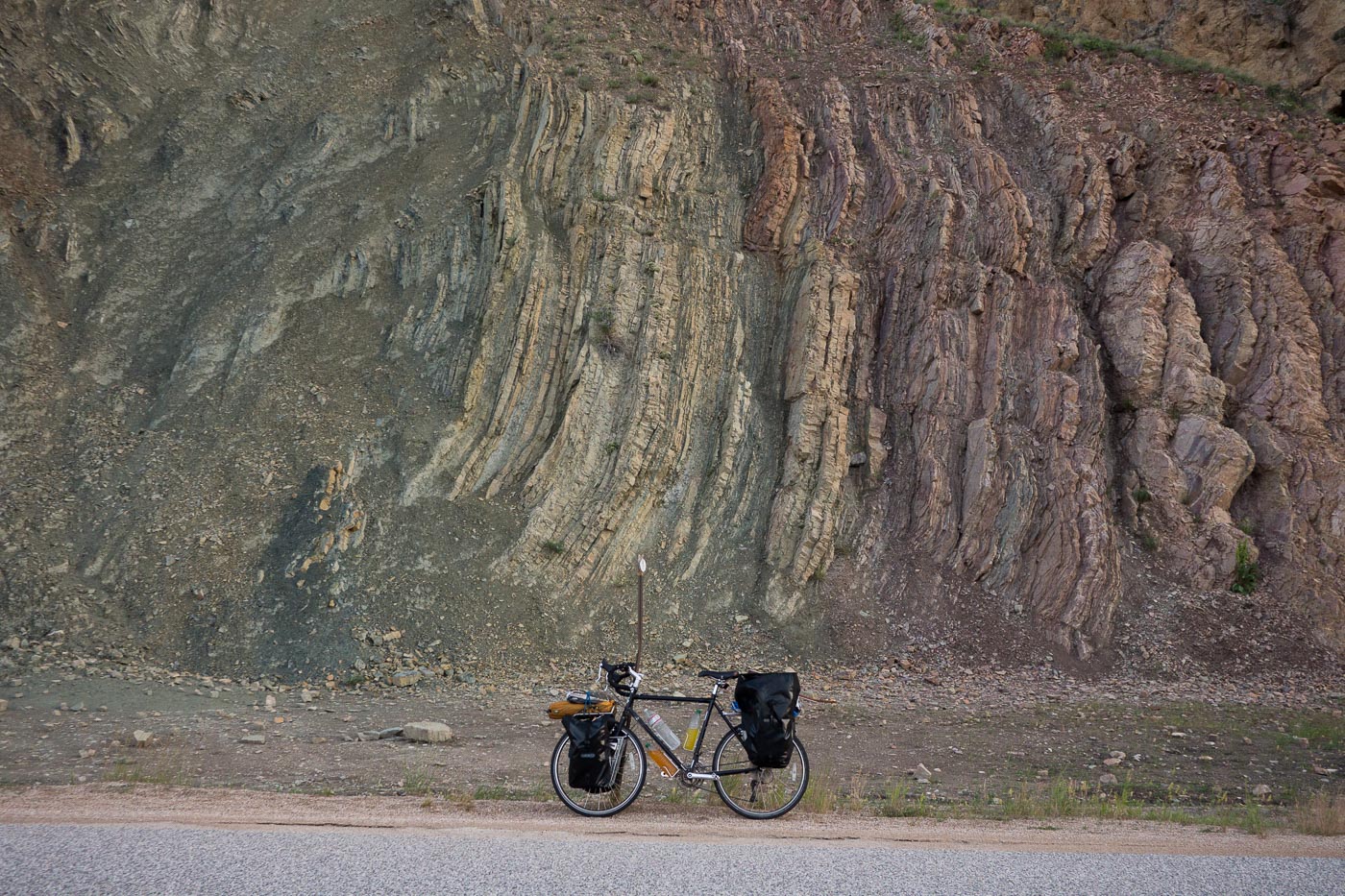
I take it slowly and little by little make progress up the slope. The long climb appears to end, but I’m not even close to the pass. A series of rolling, gentle hills bring me through an alpine forest: a broad, high plateau, somewhere between 7 and 9,000 feet. Through one half-mile stretch there is an inch or two of snow covering the ground. The cool air smells strongly of spruce. The forest is bright with sun and dew. In patches silvery lupine cover the undergrowth, a mosiac of purple and green. I eat my third banana of the morning with some peanut butter. Traffic picks up a little. The rocky peaks of Bighorn and Darton only occasionally come into view above the trees.
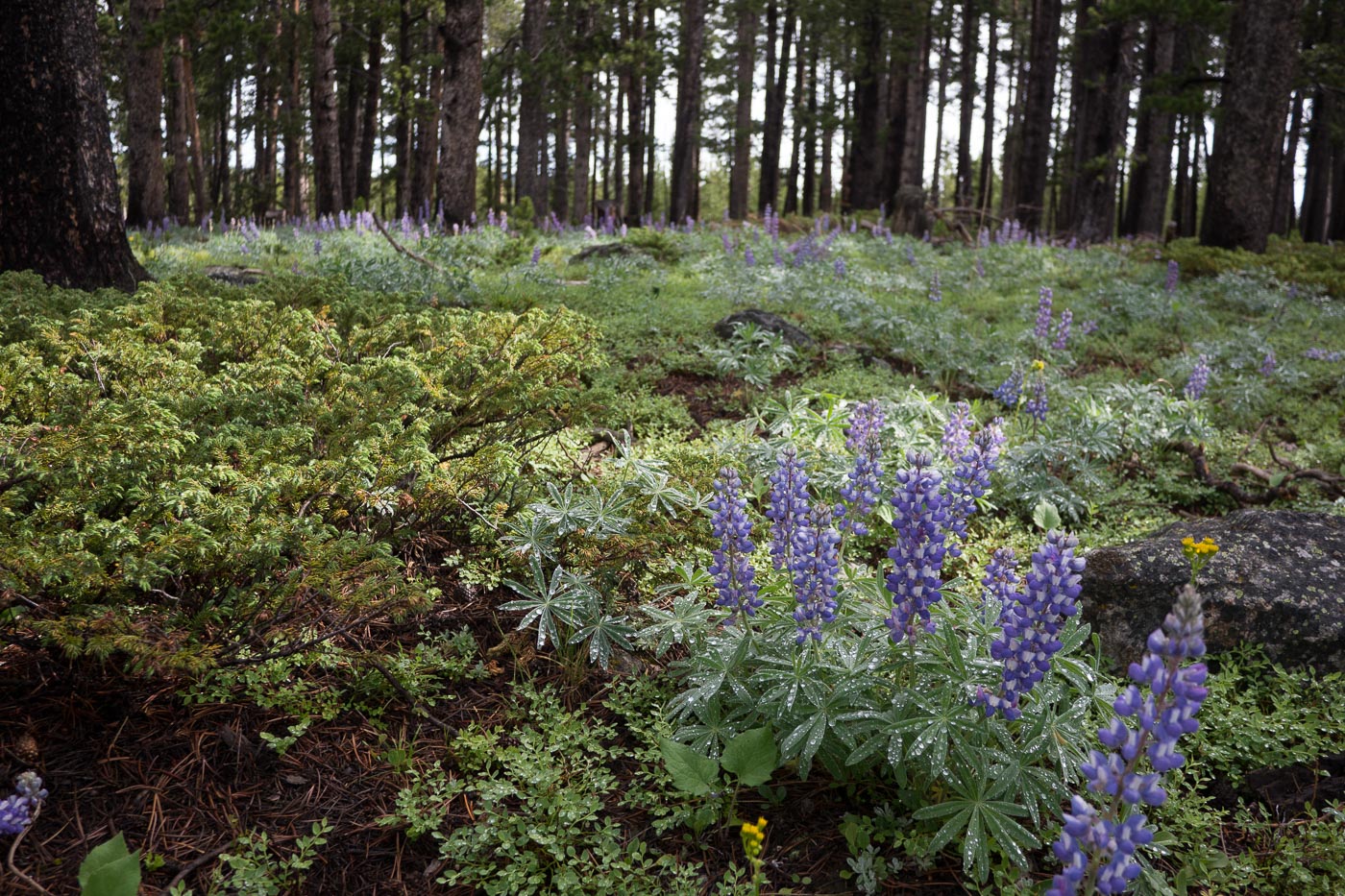

Thirty million years ago the Rockies in Wyoming were buried, in their own eroded sediment and volcanic ash and sand from the west, nearly to their tops. This is what cooked the Powder River coal. Along the shoulders of the Bighorns, and in other Wyoming ranges, the high plain remains. I am biking over the old Miocene fill.
Five and a half hours into the climb, I make the Powder River pass: 9,666 feet. I eat a celebratory PB&J, with the last of mom’s strawberry jam.
On the way down, a bull moose trots into the road fifty yards ahead of me. I hit the brakes. He notices and turns, comes up the road toward me a bit, then stops. A very large animal. I slowly walk the bike backward. We stare at each other for about a minute until a car comes, and he vanishes into the woods.
The valley taking me down opens into the expansive Ten Sleep Canyon. The highway rides high along the northern wall. Above me are enormous sandstone outcrops. It is a gentle meander down to Ten Sleep. The best kind of sign announces: 6% grade, next 18 miles.

Behind me, thunderheads bloom, bright white under the sun. I don’t have to worry: shelter is to the west, and it’s all downhill. This is not so for five other cyclists I pass today, headed up. Five cyclists, three different groups. Some coming from Oregon, some Washington, some Montana. One couple is headed to Minnesota. Apparently they had clustered in Ten Sleep waiting for a clear day to attempt the pass.

I stop and talk to a few. One asks me if I had heard about the cyclist killed by a grizzly in Glacier, just a few days ago. I had not.
All told, 63 miles to Ten Sleep. I tent out in an RV park next to some friendly bikers, who ask whether I need a motor. Here, you can have the Honda’s! (Laughter.)
Day 20 Breakfast at Dirty Sally’s in Ten Sleep before leaving. The owners are a funky young couple, engaged in a conversation about fossils with an old farmer who’s here for coffee. I butt in (fascinated with Wyoming geology) and end up buying an extra copy of the Roadside Geology from them.
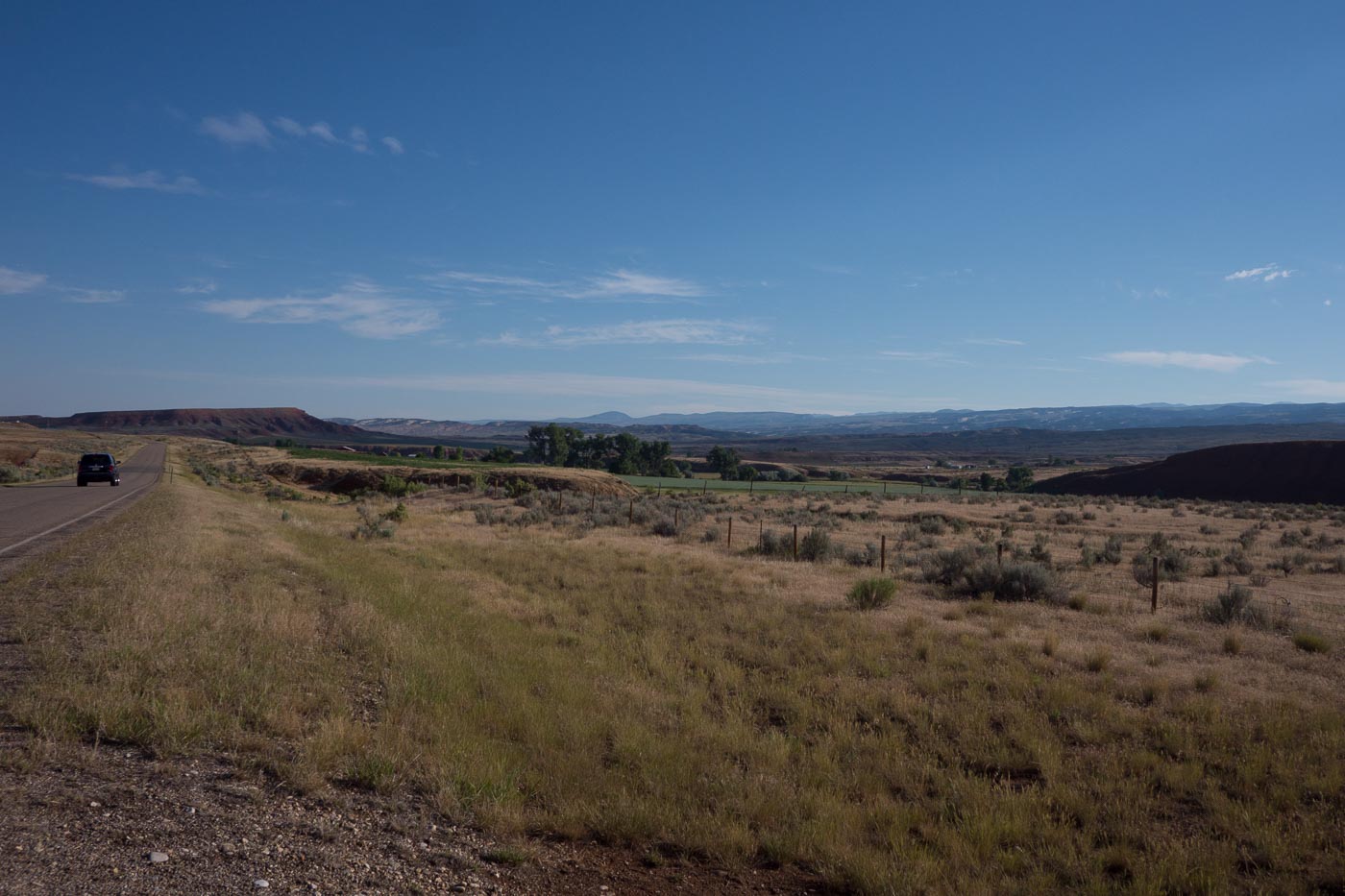
It’s a 53 mile ride to Greybull, heading north up a river valley. Storm clouds pass west to east in the distance, and more develop over the Bighorns to the east. I consider a longer ride, but by the time I’m in Greybull there are storms in the way.
I stay at an RV park, which has a reasonable tent rate, $10. The KOA in town would have charged me $35.
Day 21 I cross the Bighorn basin on US 14 to Cody: 53 miles, almost due west. Much like the Powder River basin, it’s arid and flat. I get started early, 5:30.
Early mornings it is for the westbound cyclist. Little traffic, a low sun to the back, cool air. The west winds are sleeping. There is birdsong in the air and a sense of making good time. I beat the thunderstorms which roll across the basins every afternoon. The tradeoff is that packing up in the morning feels rushed. I’ll even skip coffee if the forecast looks particularly bad.

I make it to Cody before the winds howl, and they do howl all afternoon. A few storms roll through. It’s the 3rd of July in a tourist town, and the RV park has only one tent spot left — or rather, there are no more tent spots, but they can fit me in the yard next to the office, underneath a giant Burger King nightlight.
In the evening I attend the Cody rodeo, a big event made bigger on the eve of the 4th. The announcer, riding his horse around the arena, is a stream of personality, constant booming over the microphone, some mix of sports announcer, preacher, and radio talk show host. Much time is spent in tribute to America, Jesus, and the armed forces. An old cowboy sings the anthem in a warbling voice; behind him, a horse begins to buck and a cowboy goes flying. Other cowboys replace their Stetsons and swarm to contain it. The announcer asks any spectator who has served — army, marines, air force, coast guard, active duty or reserve — to please stand, and a solid tenth of the bleachers moves up to applause.
The bareback competition starts. First up is Dart: great buckin’ horse. Dart darts into the arena, his rider holding with one arm (which appears to be supported by some sort of cast) until the fierce bucks force a second hand down for support. Folks, he was eight hundredths of a second from setting a score. Next up is Medicine Bags, who like Dart bucks heartily enough to prevent a score. Fallen Stetsons accumulate. Next up: Bar Fever. And the rider’s name is Wynn First Ratliff. Yes his first name is really Wynn, and his middle name is really First. Wynn keeps his hat on and his hand up. 80 points, loud cheers.
My attention moves beyond the arena to a different performance. A rip in the clouds, a storm coming down from the Absarokas, a body of rain, wisps and tendrils, glowing blue and gold under a setting sun.
